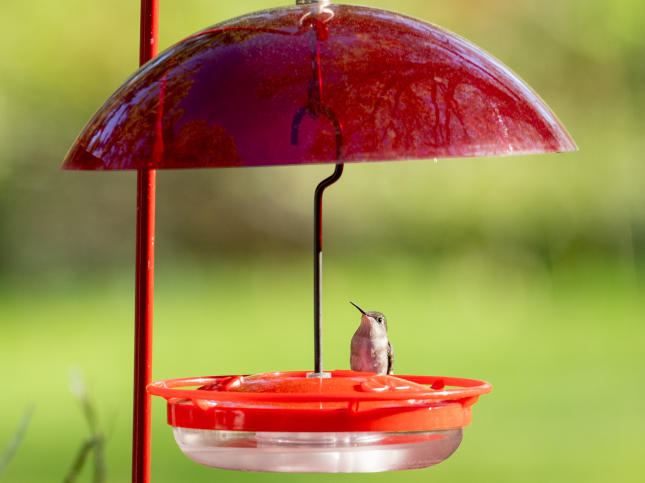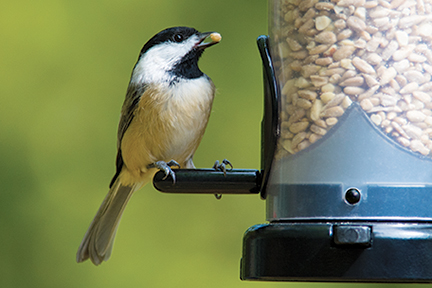Hummingbird Headquarters
Ruby-throated Hummingbirds are en route north. Sightings this time of year can be sporadic, so fill your hummingbird feeders only half-way while you're waiting to minimize waste. Stop in and let us help you get ready to attract hummingbirds this season.

The scoop:
Who? The Ruby-throated Hummingbird (RTH) is the only variety we see regularly in CT.
When? First reports start around April 14. Sightings can be sporadic as RTHs trickle in and females disappear to sit on their nest. Around mid-July, activity really picks up as females leave the nest and fledglings are active too. The fun lasts through the end of September.
How? Birds find their food by sight. To help birds find your bird feeder, place it in an open, easy-to-see spot, at least at the beginning of hummingbird season.
What? Nectar. Hummingbirds primarily drink nectar from plants and feeders and eat the occasional insect.
Nectar recipe:
4 parts water, 1 part plain white table sugar. Use hot (doesn't need to be boiling) water to dissolve the sugar and let cool. Fill feeders and keep the remainder in the fridge for quick and easy refreshing. Please refresh every 3-5 days and every 2-3 days when it gets warm outside.
📌 Important: Use ONLY refined white table sugar; NO organic/brown sugar or honey. And ❌ NO red dyes, please!
✚ Keep it fresh. Fresh nectar is critical for providing healthy support to our hummingbirds. Check out our Feeder Fresh™ Nectar Defender™ -- a natural compound that keeps nectar fresh for 10-14 days.
➡️ Adding native plants to your garden will really make your yard a bird HOT SPOT. Some of our favorites include: Butterfly Milkweed, Beebalm/Wild Bergamot, Trumpet Honeysuckle, Wild Columbine, Jewelweed, Cardinal Flower and Purple Coneflower.

